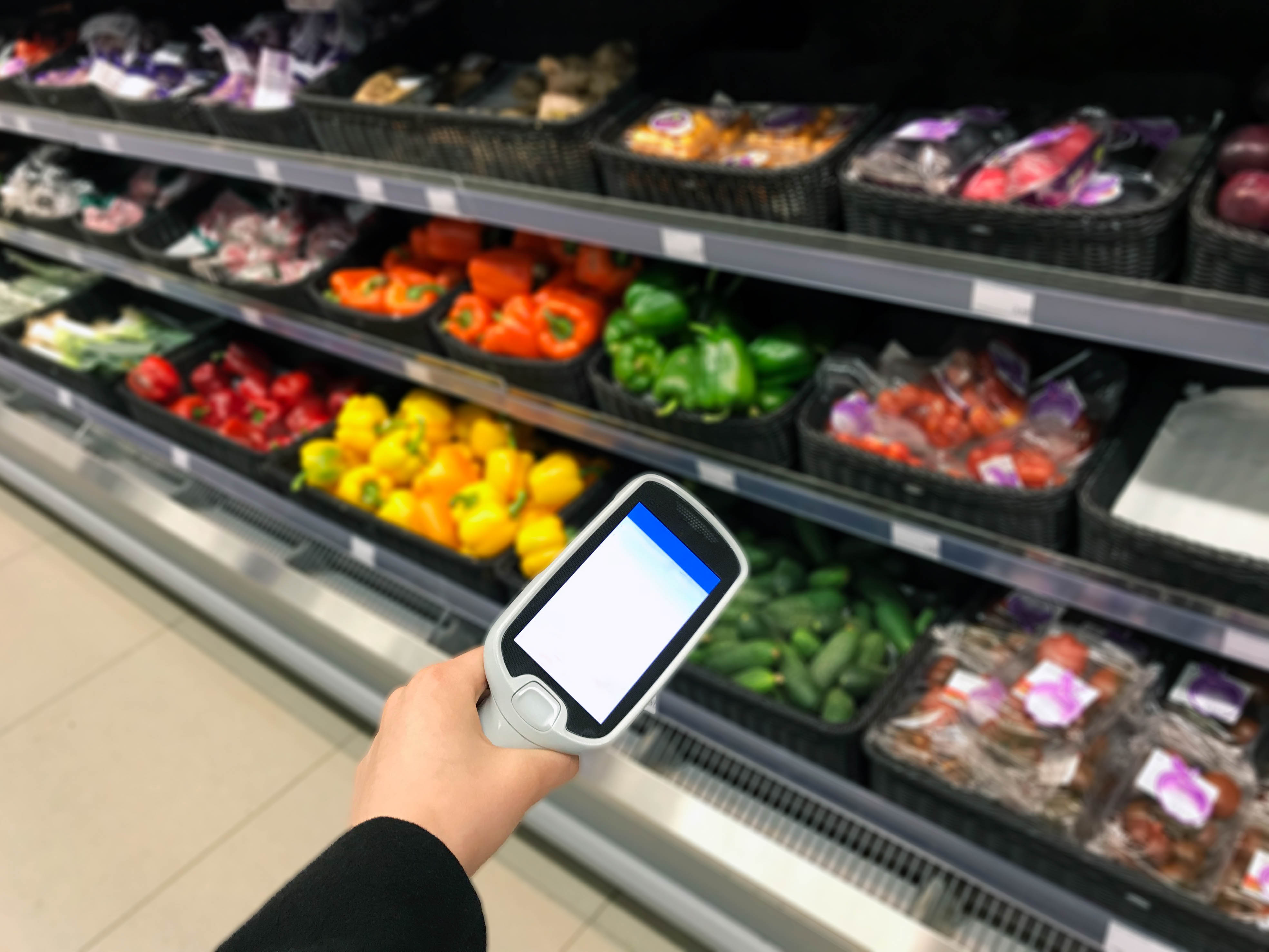Three key growth strategies for grocery retailers in 2025
Grocery retail is evolving fast, shaped by new customer habits and new digital players. Unlocking growth means reimagining the customer experience and building real value for shoppers.
Grocery retail is at a crossroads. Across Europe, industry leaders are grappling with tighter margins, rising competition, and weak consumer spending. The latest EuroCommerce survey shows that twice as many grocery CEOs expect tougher conditions this year compared to those who are optimistic — a telling sign of just how unsettled the landscape has become.

Margin pressure remains the top concern, but what’s really turning heads this year is a shift in priorities. For the first time, identifying and launching new growth opportunities has jumped into the top ten concerns for grocery CEOs. There’s a clear sense that relying on traditional efficiency levers is no longer enough to secure the future.

In this climate, doing more of the same won’t cut it. That’s why in this article, with help from Milena Lazarevska, SVP of Quick Commerce Delivery Hero, and Fabrice Zumbrunnen, CEO of Aevis Victoria and former CEO of Migros, we will explore why grocery retailers need to rethink customer value, what strategies are showing results, and what it takes to put them into practice. These conversations point to three strategic pillars that are beginning to define the next chapter for the industry.
Why retailers must look beyond efficiency
Grocery retail has always been, and will always be, an industry where efficiency matters. Cutting costs, streamlining supply chains, and squeezing margins have long been the name of the game. But as Fabrice Zumbrunnen points out, trimming every bit of fat no longer gives you an edge, because everyone is doing it. When efficiency becomes the norm, it stops being a differentiator and simply becomes the price of entry.
Today’s consumers expect more and better from grocery retailers. People’s work and life routines are shifting, more shoppers are heading online, and factors like an ageing population, smaller households, and economic uncertainty are changing the way we buy groceries. Price, of course, is still a primary decision factor. If you can’t offer competitive prices, the conversation ends before it begins. But focusing only on price risks missing what really matters to customers. That could be convenience, or a shopping experience that fits seamlessly into their lives, rather than just another place to buy the basics.
“The core strategy must be to adapt your offer to your customers’ lives, not expect them to adapt to yours.”

Fabrice Zumbrunnen
CEO of AEVIS Victoria, Ex-CEO of Migros
When Milena Lazarevska joined leading quick commerce business Delivery Hero in 2020, the pandemic was already showing how quickly new grocery models could take off if they met a real customer need. Growth can be dramatic when you truly understand what customers value and deliver on it, often by expansion into customer-relevant adjacent services. As Zumbrunnen puts it, “The core strategy must be to adapt your offer to your customers’ lives, not expect them to adapt to yours.”
What are three key growth strategies for grocery retailers in 2025?
1. Think like a challenger to quickly spot and act on customer trends
Getting ahead of customer trends starts with two essentials: looking at the right data and testing fast.
Unsurprisingly, incumbents have a lot to learn from challengers in this respect. Established retailers often have a wealth of high-quality data about customers’ preferences and behaviors, but they don’t always have the agility to act on it. Digital-only challengers, like Delivery Hero, are advantaged as they don’t need months of analysis to try something new. “Growth for us is powered by speed and customer obsession.” Lazarevska says. “We test fast, scale what works, and move on from what doesn’t.”
Examining evolving consumer needs broadly, a few patterns emerge. Maximizing the convenience you can offer customers makes it easier for them to choose, and keep choosing, your brand. Delivery Hero capitalized on the trend for ultra-fast convenience with a business model that supports delivery in 30-60 minutes in many cities. Trend-sensitive products are another high-reward area — a snack or drink might go viral on social media overnight, and the retailers that can list these products straight away, and remove them just as quickly if interest fades, are rewarded with strong demand.
Quite often, your customers will provide feedback that mention things they want or ways in which your business didn’t live up to those expectations. These insights are a great starting point for differentiating with a beneficial solution.
“Growth for us is powered by speed and customer obsession. We test fast, scale what works, and move on from what doesn’t.”

Milena Lazarevska
SVP of Quick Commerce, Delivery Hero
Of course, challengers can learn from incumbents too, especially when it comes to operational excellence and relentless optimization. Convenience can mean different things for different retailers. Doubling down on the basics that established players do so well, like delivering a consistently great experience and high frequency, can still work well to alleviate customer pain points.
For businesses, the challenge is determining which option is best suited for their target audience. Migros, for example, met the real needs of customers by developing lines for people with allergies, fresh “farm to fork” produce from local farmers, in-store bakeries, and a growing offer of vegan or vegetarian products.
2. Build simple, convenient, integrated experiences to drive loyalty
While customer loyalty looks different for incumbents and challengers, both sides agree that it doesn’t look like it used to. Under 10% of Delivery Hero’s searches are for a specific retailer or private label, meaning most customers shop across multiple brands. That’s actually a positive, because it leads to more cross-shopping and more frequent app use. “Customers spend up to fifteen times more when they cross-shop verticals. So we reward that kind of behavior,” Lazarevska says. Their brands ' loyalty programs reward customers for engaging across the entire platform — food delivery, groceries, health, and more.
Rewards are simple and relevant, like free delivery or discounts, though there are other perks too. However, what matters most is thinking about loyalty across the whole platform, not just in one part of the business.
There is no doubt that personalized deals, in the form of relevant offers and loyalty rewards based on user behavior, keeps customers coming back and spending more. Grocery retailers already have the data to identify individual preferences. The opportunity is to use that data for impact, testing and refining offers, and using tailored offers to nudge customers into adjacent services as a seamless omni-channel experience. Migros, for example, launched its own credit card, connected to its loyalty program, as one arm of a connected ecosystem model. Customers got great terms, Migros reduced transaction fees, and the bank grew its customer base. A real win-win-win.
The one note of caution is this: while every interaction is a chance to create value, overwhelming customers with services they didn’t ask for can lower overall satisfaction. There should be a constant dialogue that takes place to determine if new services focus on your brand promise, or if you risk drifting so far from what made you distinctive that customers no longer recognize or trust your brand.
3. Build Partnerships
For many retailers, the big question is when to develop adjacent services in-house and when to look outside for expertise or scale. Sometimes, that answer will be obvious. It takes significant time and investment for rapid delivery/quick commerce models to reach profitability, for example, so partnering with established third-party providers allows for fast entry without upfront capital expenditure.
Alongside operating its own network of around 800 Dmarts, or dark stores, Delivery Hero also partners with thousands of retailers. Their approach is to integrate their partners’ store networks onto the app platform, mirroring their assortment and pricing. The grocery staff handle in-store picking, while Delivery Hero manages logistics and delivery. With an established fleet and cross-country coverage, thanks to both its food delivery and Quick Commerce operations, Delivery Hero can offer scale that would be extremely difficult and costly for most retailers to build on their own. The relationship between retailer and delivery partner is truly symbiotic — in some markets, a Delivery Hero partnership is driving up to 70% of a retailer’s online grocery sales. “Retailers should invest in what aligns with their core and partner where others can do it better or faster,” Lazarevska says.
“Retailers should invest in what aligns with their core and partner where others can do it better or faster.”

Milena Lazarevska
SVP of Quick Commerce, Delivery Hero
Of course, success in partnerships is about more than just having a good business model. Many collaborations fail because of cultural mismatches or unclear roles. Building in-house could make sense when the capability is truly core to the brand and customer promise, but exploring new territory often means working with outside partners. As you weigh your next move, the question becomes: is this a capability you should own, or could the right partner help you achieve more, faster?
What’s next for grocery retailers in 2025?
Every business faces its own unique set of challenges, and there’s rarely a one-size-fits-all growth strategy. Retail is detail — there’s always something to improve or an opportunity that’s been overlooked. Before launching new initiatives, it’s worth taking the time to really understand the customers’ direction of travel and the gaps that might exist.
Artificial intelligence (AI) is a nascent trend to watch. As generative AI becomes more widespread, customers could soon be shopping directly through platforms like ChatGPT, WhatsApp, or Siri, bypassing traditional retailer websites and apps altogether. Voice, chat, and assistant interfaces may soon matter more than owned environments, and retailers need to stay visible wherever the customer’s query begins.
Another trend to track is the rise of GLP-1 drugs like Ozempic. These medications are changing eating habits for millions, and will reshape what retailers need to offer and require careful planning for future shifts in consumption patterns.
Ready to rethink your grocery growth model?
To stay ahead, forward-thinking retailers must translate these emerging trends into concrete actions for growth. Make sure to build your strategy around these growth levers:
- Be faster to market with what customers really want. Learn from the agility of challengers and use data to spot and respond to trends quickly.
- Add value across every touchpoint. Make every interaction, whether in-store or online, an opportunity to strengthen loyalty and deliver a better experience.
Partner where it makes sense. - Work with others when speed, scale or bold entry into new verticals is needed. But keep control of what makes your brand unique; preserve what sets you apart.
Our team has helped retailers and CPG leaders break out of the “doom spiral” of inflation, margin pressure, and stagnation. If you’re ready to move beyond incremental change and build long-term resilience, get in touch via the form below.
You may also like
These related articles

Beyond efficiency: A new playbook for value creation in grocery retail

Sustained business growth: why it's so hard and why gravity matters
